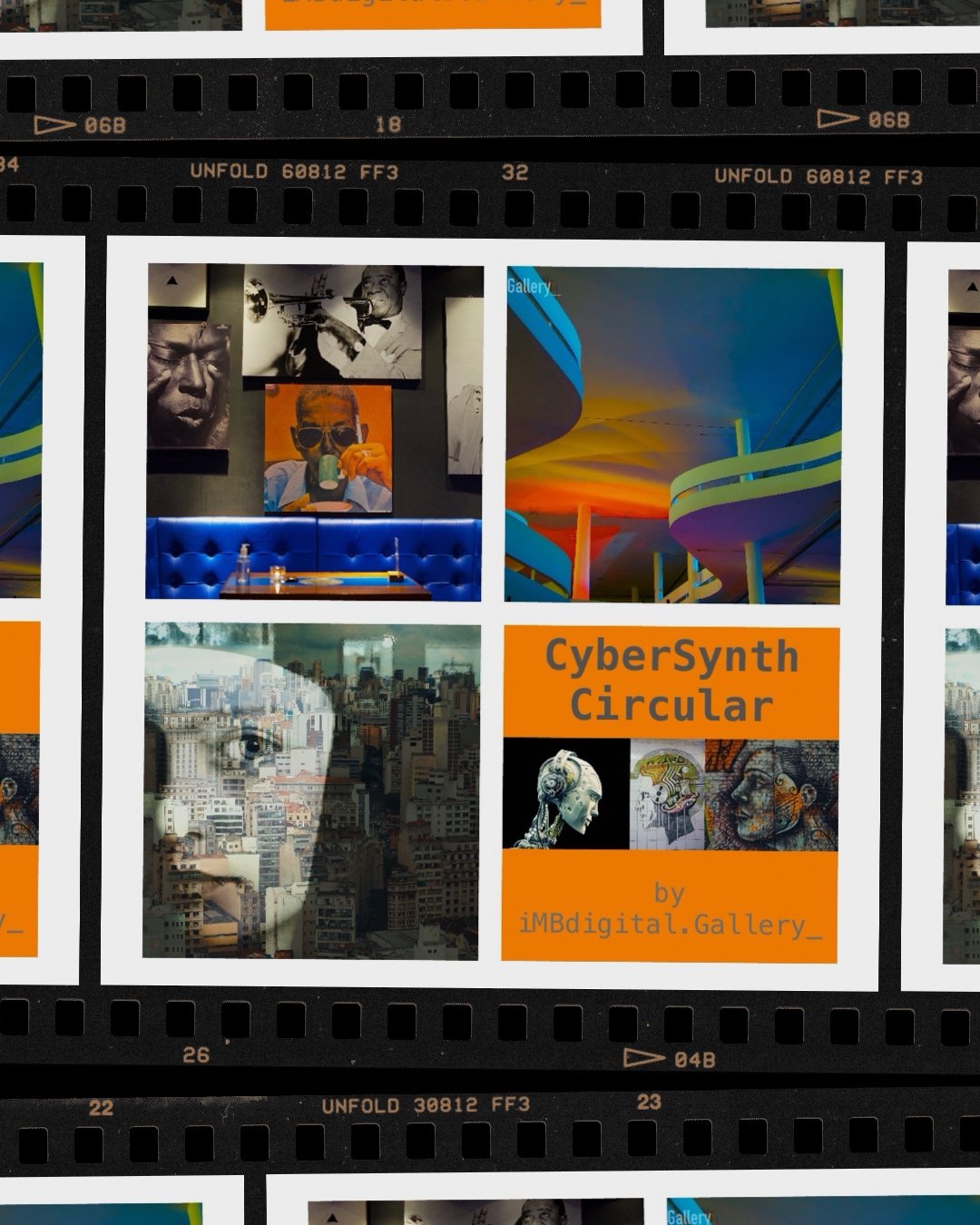How to Create a New Cryptocurrency as a Token - A Step-by-Step Guide
Montevideo, Uruguay, January 2023
Prolog
A few months ago, I finished an interesting book: Christopher Columbus' Board Book, 1492, in which he describes not only his daily life but also the thoughts that led him to embark on his bold project to sail west. He describes very impressively how people reacted when he promised to discover a new hemisphere. Such a new hemisphere could not exist, as the earth was a slide. When the project then became an all-altering success, the same people claimed that it was not so surprising, that it had already been known from ancient traditions. We have the same tendencies again today. There are also people who believe, or still believe, that the earth is flat. Bold, new ideas are just pipe dreams. When they become reality, we hear from exactly the same people that it's all just cold coffee. Just think back to Tesla's first market steps or SpaceX's revolution in space travel. Or the hysterical shouting of the opponents of renewable energy sources and how these new sources and technologies are simply taking over due to their economic superiority. (SPCoder)
SPCoder & TangoTech:
“… If you look at the current developments and discussions in the global economy and the so-called Big Techs of the social media industry, you should get an idea that Web3 technology, SmartContracts and Blockchain 2.0 are probably on the verge of a global breakthrough. Many individuals around the globe are already painting the darkest ghosts on the wall when it comes to Big Techs and social media platforms - but we are probably experiencing the last twitches of the Web2 world, represented by the panicking Big Tech bosses. Even if these people believe they can secure their supremacy as data octopuses for generations by abolishing fact checking, Web3 is here to stay. Their belief in Bitcoin shows that these same people don't want to grasp the inexorably emerging world of Blockchain 2.0 and the power of smart contracts. …”.
Preface
In the era of blockchain and decentralization, creating your own cryptocurrency has become an exciting prospect for entrepreneurs, developers, and innovators, even governments. With thousands of cryptocurrencies already in existence, launching a new one requires more than technical expertise—it involves strategic planning and a clear understanding of the ecosystem. This guide breaks down the process of creating a new cryptocurrency as a token.
Background information “ARGCoinVault Project”
Since Q4 2023, we have been periodically involved in a project mission in Argentina. The project management is handled by iMB.Solutions; the client is also a client of iMB.Solutions. Together with iMB, we are integrated in a subcontracting in the project structure and work primarily in the field of Blockchain 2.0 and SmartContract infrastructure as well as in the participation in the preparation of a feasibility study.
The focus of the project mission is embedded in the overall context of the creation of an own cryptocurrency in Argentina as well as the tokenization of mining and lithium resources. At the end of this blog you will also find an information hub with further blogs and case studies that we or iMB.Solutions have published on this topic over the last 1.5 years.
In the context of such a project mission, the fundamental question always arises as to whether you will issue your own coin or a stablecoin in the context of tokenization. Creating your own coin is undoubtedly the greater challenge.
With this block, we want to give you a generic overview of the necessary questions and project processes that directly or indirectly affect these points. You will also find a specific PDF file for download below in this block.
This document represents the basic considerations and steps within the project mission in a very focused way. The document is kept generic so as not to give any indication of the real project environment. However, if you would like additional information, please send us an email. Write to us and we can arrange a call.
Project process
Step 1: Define the Purpose and Utility
Before delving into the technical aspects, the most crucial part of creating a new cryptocurrency is defining its purpose. What problem will your token solve? Will it be a payment token, a utility token within a decentralized app (dApp), or a governance token that gives holders voting rights within a protocol?
For example, utility tokens can grant users access to specific features of a blockchain-based platform, while governance tokens can offer voting power within a decentralized organization (DAO). This step will set the foundation for your token’s development and long-term viability.
Key Considerations:
Token name and ticker symbol
Supply model (fixed, inflationary, or deflationary)
Governance structure (centralized vs decentralized)
Step 2: Choose the Blockchain Platform
The next step involves selecting the blockchain platform on which to build your token. For most token projects, creating a standalone blockchain is unnecessary and costly. Instead, tokens can be launched on existing blockchain platforms. Here are some popular options:
Ethereum (ERC-20 standard): The most common platform for token creation, Ethereum is ideal for dApps and DeFi projects.
Binance Smart Chain (BEP-20 standard): A cheaper and faster alternative to Ethereum, with lower gas fees.
Solana: Known for its high-speed and low-cost transactions, Solana is gaining popularity for decentralized applications.
Polygon: A layer-2 scaling solution for Ethereum, offering fast and cheap transactions. iMBdigital.Gallery_ applies Polygon and Ethereum blockchain on all projects for tokenization.
Each blockchain comes with its own token standards, development environment, and level of decentralization. Choose one that aligns with your project’s goals, especially considering factors like transaction speed, scalability, and ecosystem support.
Step 3: Develop the Smart Contract
A cryptocurrency token is essentially a smart contract deployed on a blockchain. The smart contract governs how tokens are issued, transferred, and managed. This is the technical core of your token, and it must be carefully coded to ensure security and functionality.
Basic Functions of a Token Smart Contract
Minting and burning: The ability to create or destroy tokens.
Transfers: Handling the exchange of tokens between addresses.
Ownership and permissions: Ensuring the correct control of who can execute specific functions (e.g., minting).
You can use existing frameworks like OpenZeppelin to create secure smart contracts that follow industry best practices. Smart contract development often requires knowledge of Solidity (for Ethereum-based tokens) or Rust (for Solana).
Step 4: Testing the Token
Once the smart contract is developed, it's crucial to test the token in a controlled environment. Most blockchains have testnets (like Ethereum’s Ropsten or Binance’s Testnet) where you can deploy and simulate the token’s real-world operations without financial risk. Use test tokens to validate the smart contract’s functionality, including transfers, minting, and burning.
Tools for Testing
Truffle Suite for testing and deployment
Blockchain explorers to monitor token activity
This step ensures the smart contract is bug-free, secure, and works as expected before going live on the mainnet.
Step 5: Deploy the Token on the Mainnet
After testing, you can deploy the smart contract on the chosen blockchain’s mainnet. This makes the token live and accessible to users. Mainnet deployment requires you to pay gas fees, so ensure you have sufficient native tokens (e.g., ETH for Ethereum) in your wallet.
Deployment Process
Finalize the smart contract code.
Use deployment tools (such as Hardhat or Remix for Ethereum).
Pay the required gas fees for deploying the contract.
Once deployed, your token will officially exist on the blockchain, and its details can be viewed on blockchain explorers like Etherscan (for Ethereum) or BscScan (for Binance Smart Chain).
Step 6: Distribution and Marketing
Creating a token is only the first part. The next step involves distributing it to your intended users or investors. There are multiple ways to distribute your tokens.
Initial Coin Offering (ICO): Raise funds by selling tokens to early investors.
Airdrops: Distribute free tokens to users who meet certain criteria, helping build an initial user base.
Liquidity Mining: Offer tokens as rewards for users who provide liquidity in decentralized exchanges (DEXs).
Marketing Strategy
Building awareness is essential. This includes creating a website, engaging with social media, and building a community around your project. Partnerships, press releases, and active engagement with crypto influencers are also key to building interest and driving adoption.
Step 7: Ensuring Compliance and Security
Launching a token involves legal and regulatory considerations. Depending on your jurisdiction, your token may be classified as a security, commodity, or other financial instrument, which can affect the legal requirements for launching and managing it.
Legal Considerations
Conduct a legal review of your token’s structure.
Ensure compliance with anti-money laundering (AML) and know-your-customer (KYC) regulations.
Understand tax implications for you and your users.
Security is equally important. Conduct a professional audit of your smart contract to identify vulnerabilities, and consider implementing bug bounty programs to incentivize external developers to find security flaws.
The Whitepaper
In the early stages of such a project, a whitepaper on the new cryptocurrency must be created. This is an essential part of the project and is not only a guideline, but also a fundamentally important marketing tool on the way to the market launch of the new cryptocurrency. This undoubtedly leads to a fundamental question:
How to Understand and Evaluate a Cryptocurrency Whitepaper?
Cryptocurrency whitepapers - Navigating depths of blockchain projects for informed investing
Cryptocurrency whitepapers serve as the cornerstone of any blockchain project, outlining its purpose, technology, and potential value. However, not all whitepapers are created equal, with some being misleading or fraudulent. To navigate this complex landscape, it’s crucial to develop a systematic approach for evaluating and understanding cryptocurrency whitepapers.
Here are some steps and tips on how to read and analyze a crypto whitepaper.
Check the Source and Credibility
Begin by verifying the authenticity of the whitepaper. Ensure it’s published on the official website or recognized social media channels. Pay attention to authorship and publication date, avoiding documents that lack clear ownership or appear outdated.
Read the Abstract and Introduction
The abstract or introduction provides a snapshot of the project, highlighting its problem-solving approach and value proposition. Look for clarity, relevance, and originality in the project’s idea, as a well-defined concept sets the tone for the rest of the whitepaper.
Skim Through the Table of Contents
A glance at the table of contents gives you an overview of the document’s structure. Assess the completeness, consistency, and logic of the whitepaper sections, ensuring that it covers all essential aspects of the project.
Detailed Reading of Main Sections
Dive into the key sections of the whitepaper, including the project’s rationale, utility, blockchain architecture, token distribution, roadmap, and team. Look for evidence, logical arguments, and comprehensive details that support the claims made by the project.
Evaluate the Project’s Reasoning
Assess the project’s reasoning by questioning its relevance, significance, and clarity in addressing a real-world problem. A strong and valid motivation enhances the project’s potential for success.
Understand the Blockchain Architecture
Analyze the technical aspects of the project, including its blockchain architecture. Ensure it’s sound, robust, and well-documented. A clear and consistent technical specification is indicative of a reliable implementation.
Token Distribution and Utility
Evaluate the fairness and transparency of the token distribution. Assess the token’s utility, ensuring it aligns with the project’s goals. A sustainable and balanced token economy is crucial for the long-term success of the project.
Assess the Project’s Roadmap
Examine the project’s roadmap for realism and achievability. A clear, measurable, and adaptable roadmap reflects the project’s commitment to progress and development.
Evaluate the Team
The team behind the project is a critical factor. Assess their competence, experience, diversity, and reputation. A strong and trustworthy team increases the likelihood of project success.
Cross-Check Information from Various Sources
Compare the whitepaper with other sources, such as reviews, feedback, ratings, and analyses from experts, users, or investors. Check the project’s website, social media, blog, forum, or community for consistency and credibility of information.
Identify the Whitepaper Type and Objective
Determine the type and objective of the whitepaper by examining its content, style, and format. Whether academic, marketing, or a hybrid, understanding the whitepaper’s intent helps interpret its information appropriately.
Watch Out for Red Flags
Be vigilant for red flags, including typos, vague language, fake promises, omitted sections, or hidden whitepapers. Lack of professionalism, transparency, or feasibility are warning signs of potential issues with the project.
Conclusion
Creating a new cryptocurrency token is an exciting venture that combines technical innovation, strategic planning, and marketing. By carefully considering the token's purpose, selecting the right blockchain platform, and ensuring secure smart contract development, you can position your token for long-term success. Whether you’re launching a DeFi project, a governance token, or a utility token for your dApp, the right approach can help ensure your cryptocurrency stands out in an increasingly crowded market.
In the world of cryptocurrency, understanding and evaluating whitepapers is a crucial skill. By following these comprehensive steps and tips, investors and enthusiasts can make informed decisions, avoiding potential pitfalls and contributing to a healthier and more transparent cryptocurrency ecosystem. As the industry continues to evolve, the ability to decipher whitepapers will remain an essential tool for navigating the complexities of blockchain projects.
Information Hub
Below you will find an exemplary whitepaper as well as further blogs and newsletters which we and/or iMB.Solutions have published over the last 12 months.
Introducing NebulaVault: A Theoretical Leap into Crypto Innovation, published by iMBdigital.Gallery_, Q1 2025, Buenos Aires (ARG) & São Paulo (BRZ)
What is NebulaVault?
NebualVault is more than just a cryptocurrency; it's an intellectual journey into the future of decentralized finance. Imagine a space where innovation meets inclusivity, and security dances with accessibility.
Cryptocurrencies as Catalysts for Economic Renewal? A Comprehensive Analysis for Argentina; Blog published by iMB.Solutions, Apr. 25, 2024, Buenos Aires (ARG)
The Pitch: Cryptocurrency as a Path to Economic Revival in Argentina - including a link to a special newsletter about Argentina and a download link for a PDF “Argentina - dancing the crypto tango?”
GreyRhino newsletter Special Edition March 2024 Argentina „El Loco“; published March 2024, Buenos Aires (ARG)
Throughout the year 2023, global interest in the Argentine electoral campaign steadily increased. This was undoubtedly due to one person: Javier Milei. We don't need to list his entire resume here - that can be found anywhere on the internet. But one description certainly sparked great interest: libertarian and anarcho-capitalist. In his home country, he has long been affectionately and reverently known as "El Loco" - the crazy one.
Argentina - dancing the crypto tango? Published Q1 2024 by iMB.Solutions Ltda., Sāo Paulo, Brazil
Passionate about the potential of cryptocurrencies in Argentina! Really? Exciting times ahead! Amidst interviews and discussions conducted in Buenos Aires by our project managers during January and February 2024, it's clear: crypto is gaining significant momentum, fueled by the nation's economic challenges.
With the Argentine peso grappling with high inflation and instability, more and more individuals are turning to Bitcoin and other digital currencies as a dependable alternative.
But let's delve deeper into this transformative movement. Recent initiatives by Argentine provinces to issue their own currency underline a recurring pattern of fiscal instability. While governments historically sought conventional financial remedies, they've often overlooked the nation's considerable comparative advantages.
Subscribe CyberSynth Circular Newsletter
Crafting Tomorrow's Innovations with Artistry
We thrive on collaboration,combining creativity and innovation where diverse talents come together to shape the future. We are at the forefront of cutting-edge solutions while maintaining a refined touch.







